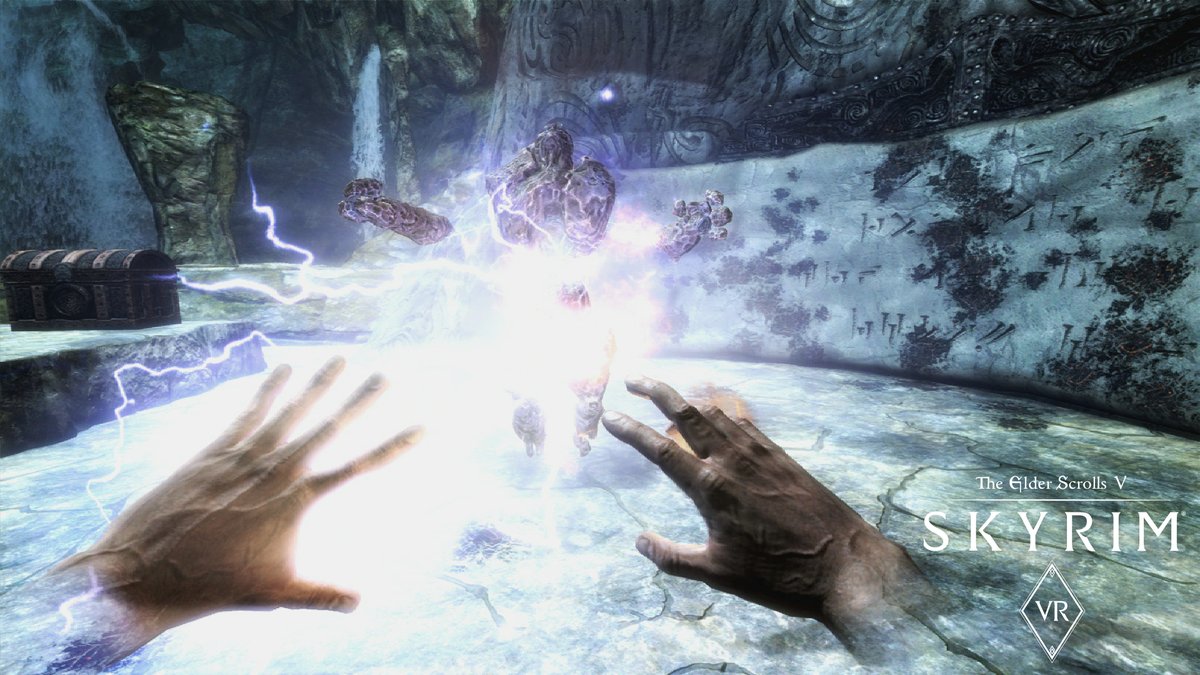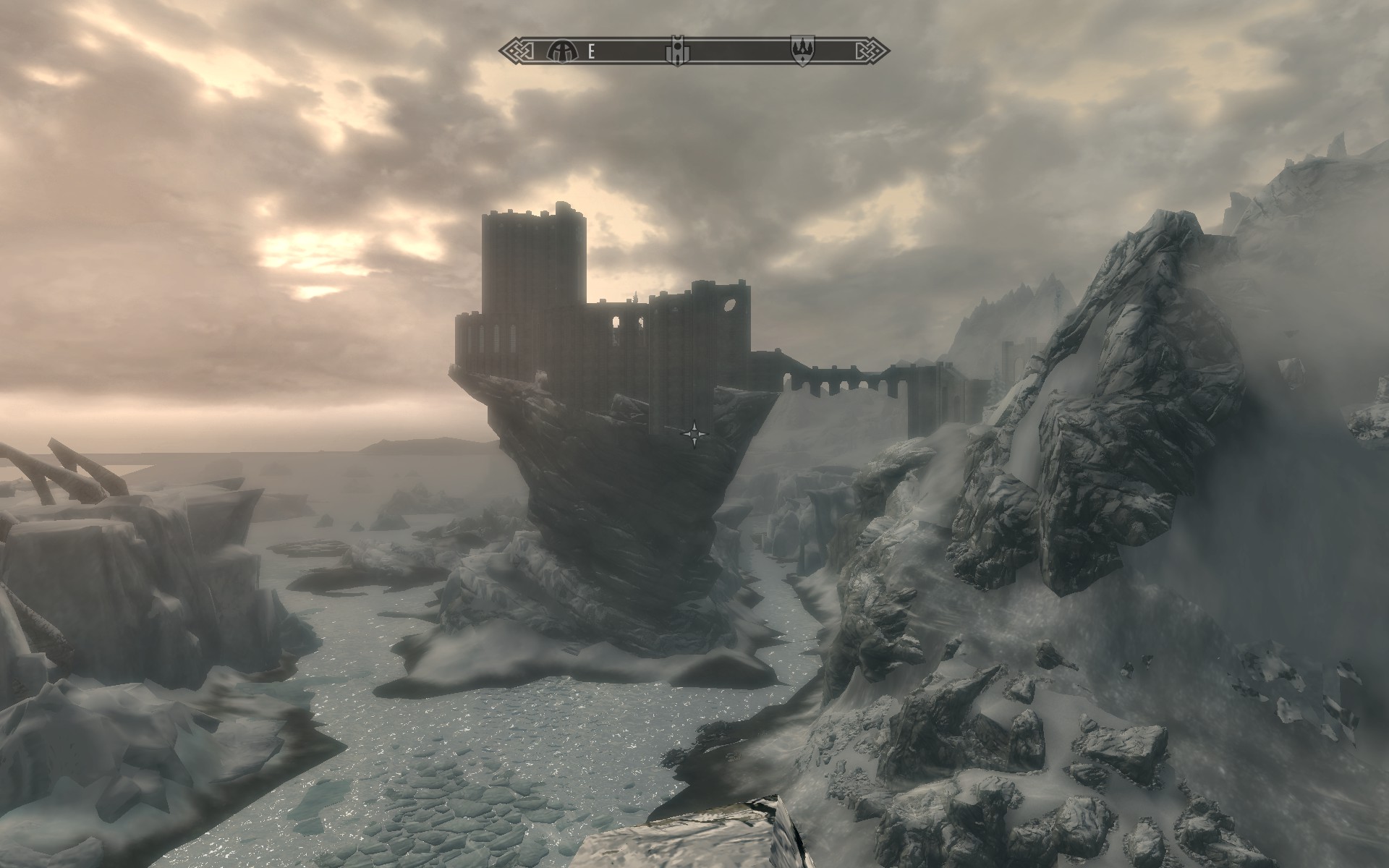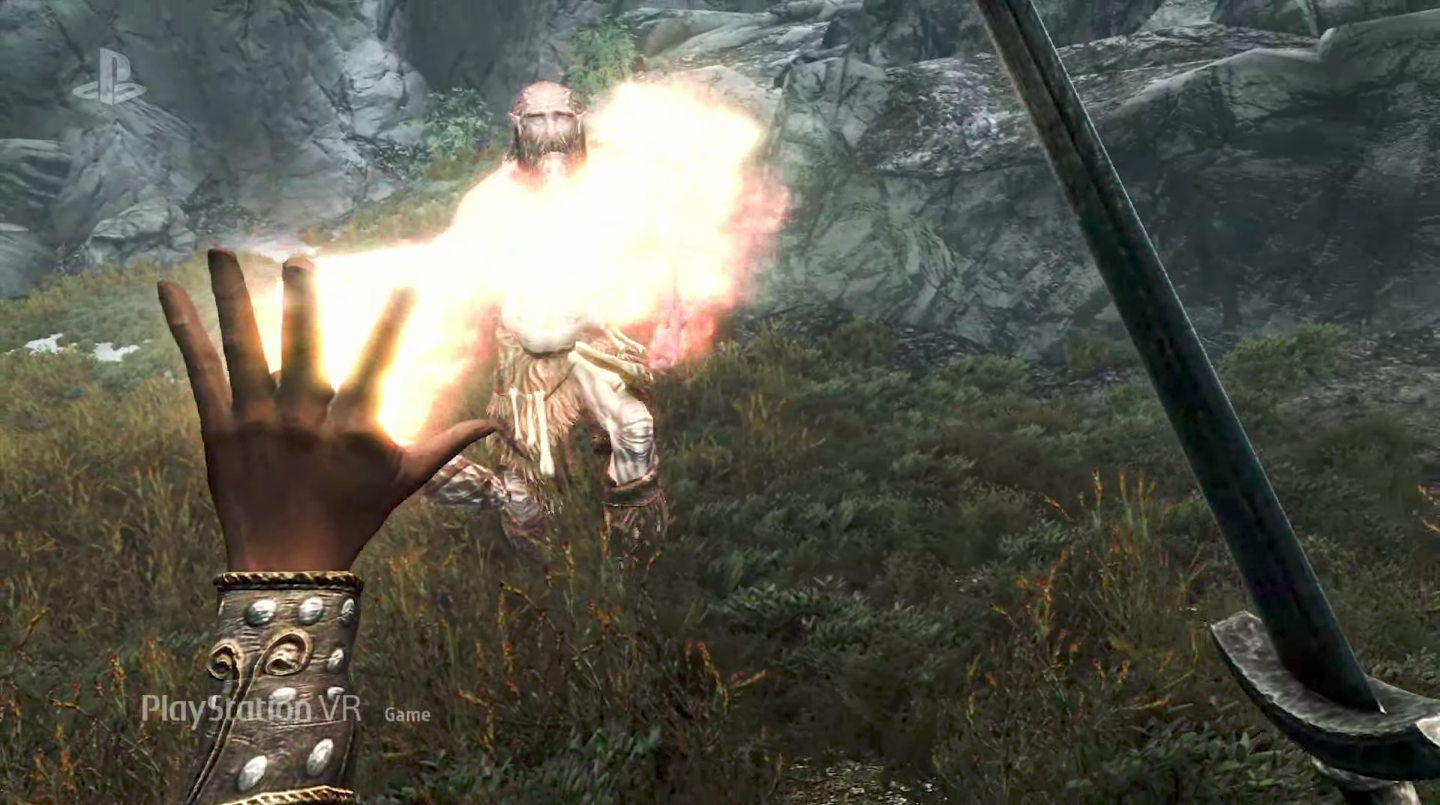The first time I tried The Elder Scrolls V: Skyrim VR at E3 2017 earlier this year I was optimistic. For me, it was enough just to visit the world of Tamriel from inside the immersive confines of a VR headset. However, it had some major flaws. Until now the only demo we’d seen required you to teleport around the game world using PlayStation’s Move Controllers. Needless to say it was a lackluster implementation and when compared to Fallout 4 VR, the issues were even more prominent.
Thankfully yesterday at a private PlayStation press event in San Francisco, CA I got the chance to try a vastly updated build of Skyrim VR. This latest demo was essentially the entire game, not just a pre-scripted section, and featured both PS Move and Dualshock 4 controller support. Finally, this was the VR edition of Skyrim I’d imagined.
The demo loaded up with a basic, well-rounded level 10 character standing out in the wilderness. I tried playing with the PS Move controllers first since that’s the most unique and VR-ified version of the game. In the options menu I could toggle between smooth movement or teleportation, so I made sure to enable the smooth movement option, and rotation turns could be toggled to snap or smooth as well. To use smooth movement with the Move controllers all you do is point your left Move controller in the direction you want to go and hold down the Move button on the front of the controller. That’s it. From here your character will slide in whichever direction you’re pointing that hand so you can strafe, go forwards, back-peddle, and everything else quite easily. Rotation is done with the face buttons on the right Move controller.
Controlling my character this way sort of felt like I was wearing rollerskates at first, or driving a vehicle, but it eventually felt pretty natural after a short while. The biggest issue with this control method is that it essentially means you can’t easily move and use your left hand in combat. While aiming the bow, for example, I’d stretch my left hand out to aim at an enemy and instinctively wanted to strafe or move a bit while aiming, but wasn’t able to since the controller was being used elsewhere at the moment and wasn’t pointed correctly.

Naturally if you opt to use the Dualshock 4 control scheme then it’s a lot like you’re playing Skyrim outside of VR, but with the added benefit of head tracking. Everything worked smoothly in this setup and the controls were familiar with a more intuitive analog stick movement system. That being said, the added layer of immersion the PS Move controllers afford was lost in the process.
Swinging my arm to swing a sword, pulling back the arrow on my bow, and raising my shield to block attacks all felt great and those sorts of interactions are lost when using standard Dualshock 4 controls. To switch movement systems you have to back out to the main menu and reload your save with the appropriate options selected.

When we spoke to Bethesda’s VP of Marketing and PR, Pete Hines, at QuakeCon earlier this year, he talked about how some parts of transitioning Skyrim to VR interfaces were made easier by the mere fact that it’s a six year old game full of content that’s still relevant, polished, and ripe to this day. They didn’t have to design a game from the ground up, but instead, just figure out how to fit an existing (albeit enormous) adventure onto Sony’s PSVR headset.
The fact that I was actually playing Skyrim and not just a watered down iteration sunk in when I opened up the map screen during my latest demo. Rather than just panning across a flat map like you do in the base game, in Skyrim VR you actually get to fly across the world, Google Earth VR style, and choose your destination that way. Zooming over to the tip of the Throat of the World or any of the other amazing locations with an eagle eye view, only to then fast travel down to them was exhilarating. It’s a whole new way of seeing the land of Skyrim through the lenses of a VR headset.

So far the biggest hurdle for a game like Skyrim VR is still the menu navigation. In any modern, large-scale RPG you’re going to spend a lot of time sorting your inventory, leveling up skills, talking to NPCs, looting objects, and perusing other various menus and submenus. Unfortunately doing all that in VR (especially with the Move controllers) is far from ideal. Using the motion controllers you have to flick your wrist from side-to-side or up and down to navigate menus due to the lack of a directional input and even using the Dualshock 4 it feels a bit jarring to have floating black boxes in the game world with you.
Visually the game as a whole can’t hold a candle to the latest “Special Edition” version of the game that released on PC and PS4/Xbox One. When a non-VR game makes the transition to VR a lot of visual fidelity is lost in the process and that’s definitely true here. There is a vague, although noticeable, downgrade across the board, but honestly the environment designs are so beautiful still and the world is so vast, that it’s a reasonable tradeoff to get a game of this magnitude running on PSVR hardware.

The Elder Scrolls V: Skyrim VR is set to release on November 17, 2017 for PSVR and is expected to come to PC VR headsets sometime afterwards. Let us know what you think of the game so far down in the comments below!


























